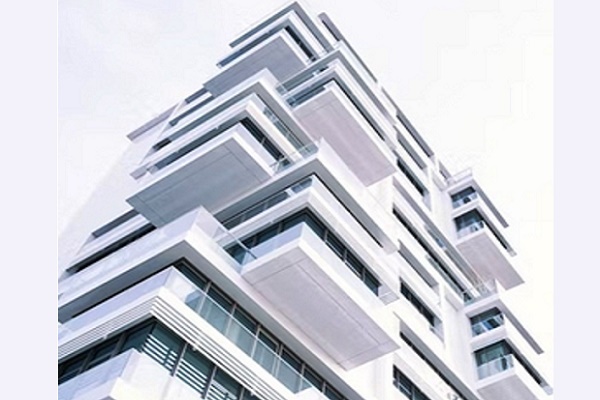2024-02-12 05:47:21 pm | Source: PR Agency

SBICAPS Report - "EcoCapsule"- Overview of Global and Indian Economy - February 2024

Executive Summary
- Central Banks have undertaken the challenging task of raising rates to historical highs to combat inflation over the past two years. This effort appears to have yielded some success, as inflationary pressures have eased, and there are signs of a potential soft landing for global economic growth. While the projected 3.1% y/y real GDP growth for the world in CY24 may not be dazzling, it exceeds many expectations. The US has demonstrated resilient growth, despite persistently high interest rates, with consumption and the labour market remaining robust. Europe faces a more complex situation but may avoid a significant economic downturn with only minor setbacks
- The decline in inflation has been steady, along with stable economic outlook. Global energy and food prices have significantly retreated from their peaks over the past two years and are expected to stabilize sooner than previously anticipated. Base effects, along with a potential China slowdown, are key drivers of softening inflation. Additionally, the prospect of a prolonged El Niño event could challenge assumptions about food production. Moreover, persistent supply-side disruptions introduce heightened uncertainty, rendering demand-side measures less effective
- Delving into China's economic trajectory raises more uncertainties than clarifications. Despite upgraded growth forecasts for CY23 and CY24, there is a pervasive sense of tepidity surrounding the growth narrative. While policymakers pledge stimulus measures, their implementation appears inconsistent. PBoC exercises caution in injecting liquidity, given the escalating debt burden in sub-national entities and the real estate sector, which pose systemic risks. Stimulus efforts predominantly benefit large corporations, with smaller entities experiencing capacity underutilisation. Consequently, China may diverge markedly from other global economies in CY24, potentially exerting significant influence on commodity markets
- Currently, with a more tempered inflation trajectory, many Central Banks are signaling forthcoming rate cuts starting from mid-CY24. For instance, US Fed Chair, Mr. Powell, has suggested that rate reductions may occur after the Mar’24 policy meeting. Similar sentiments, albeit expressed with caution, have been observed from the ECB. Yields, meanwhile, remain below their CY23 peaks, while bond issuances are reaching unprecedented heights in both the USA and Europe. In Latin American emerging markets, recent trends indicate a move towards monetary policy easing, with several Central Banks opting to cut interest rates. This shift is aimed at stimulating economic activity and boosting investment in response to global economic uncertainties and domestic challenges.
- In the near term, the impact of elections on the economy can be significant, as political uncertainty often leads to cautious investment and spending decisions among businesses and consumers. Also, high interest rates typically exert their influence on the economy with a lag, affecting various sectors and economic indicators over time. We expect higher volatility in global markets from H2CY24
- The interim Union Budget surprised markets by steadfastly adhering to fiscal consolidation, with projected fiscal deficits of 5.8% in FY24 (0.1 ppt below FY24 budget estimate) and 5.1% in FY25 (of nominal GDP). Importantly, this commitment to fiscal discipline did not come at the expense of capital expenditure, which received a notable boost of 16.9% in FY25 compared to the FY24RE. Key infrastructure sectors like Railways and Roads continued to receive significant allocations, while there was a continued emphasis on transitioning to green technologies and supporting emerging sectors (establishment of a Rs. 1trn innovation fund)
- The growth of revenue expenditures was notably subdued. Leveraging softening natural gas and global food prices, the government positioned itself for a reduced subsidy burden in FY25. Notably, the allocation for the PM-KISAN scheme remained unchanged. MGNREGS program received a generous increase in allocation, reaching Rs. 860bn in FY24 (Rs. 600 bn in FY24BE), a figure maintained for FY25. Furthermore, the government outlined its future priorities, emphasizing support for youth, women, the impoverished, and farmers to realize a Developed India by 2047
- On the revenue front, the government has opted for a conservative approach, with moderate budgeting reflecting the positive momentum observed in direct tax collections. Additionally, dividends from Central Public Sector Enterprises (CPSEs) and Public Sector Banks (PSBs) are expected to surpass FY25BE. We anticipate the government to comfortably exceed its FY25 revenue target by ~Rs.700bn, providing it with ample flexibility. It's noteworthy that increased devolution to states, driven by shifts in the gross tax pool composition, and the continuation of concessional capital expenditure loan schemes are favourable developments. This is particularly advantageous given the higher GDP multiplier associated with state capital expenditure compared to that of the Union. Nonetheless, the substantial fiscal space retained by the Union will enable it to maintain reserves to mitigate potential shock
- The RBI has pursued a strategy akin to constructing countercyclical buffers. It has maintained a firm stance on policy, reaffirming its commitment to the 4% y/y CPI mandate. Given the favourable growth projections for FY25 and the inflation trajectory, we anticipate that the timing of the initial rate cut may be postponed to Aug’24 or beyond. Bond yields have reacted positively to lower fiscal deficit amidst tighter liquidity
- Further aiding yields will be India's inclusion in global bond indices, coupled with significantly reduced government borrowing projections for FY25 (targeting gross borrowing of Rs. 14.13 trn compared to Rs. 15.43 trn in FY24RE). Additionally, the RBI has additional room for maneuvering to lower rates amidst fiscal discipline, potentially resulting in a sustained decline in 10-year G-sec yields to below 7% in the near term. The yield curve remains flat as short-term rates remains high due to liquidity deficit. We expect sharp improvement in liquidity from late Mar’24 which would lead to softening in short term rates
Above views are of the author and not of the website kindly read disclaimer
Disclaimer:
The content of this article is for informational purposes only and should not be considered financial or
investment advice. Investments in financial markets are subject to market risks, and past performance is
not indicative of future results. Readers are strongly advised to consult a licensed financial expert or
advisor for tailored advice before making any investment decisions. The data and information presented
in this article may not be accurate, comprehensive, or up-to-date. Readers should not rely solely on the
content of this article for any current or future financial references.
To Read Complete Disclaimer Click Here
Latest News

Machine learning boosts credit access in India

PLI scheme for food processing industry sees investm...

India`s exports rebound stronger in November

S&P upgrades India`s insolvency regime on stronger c...

PM Vishwakarma Scheme: 23.09 lakh beneficiaries trai...

India`s smartphone exports to US jump over 300 pc in...

Mumbai`s Worli accounts for 40 pc of ultra-luxury re...

New labour codes enhance social security, ease emplo...

Evening Roundup : A Daily Report on Bullion Energy &...

Government to ensure that honest taxpayers can do b...










